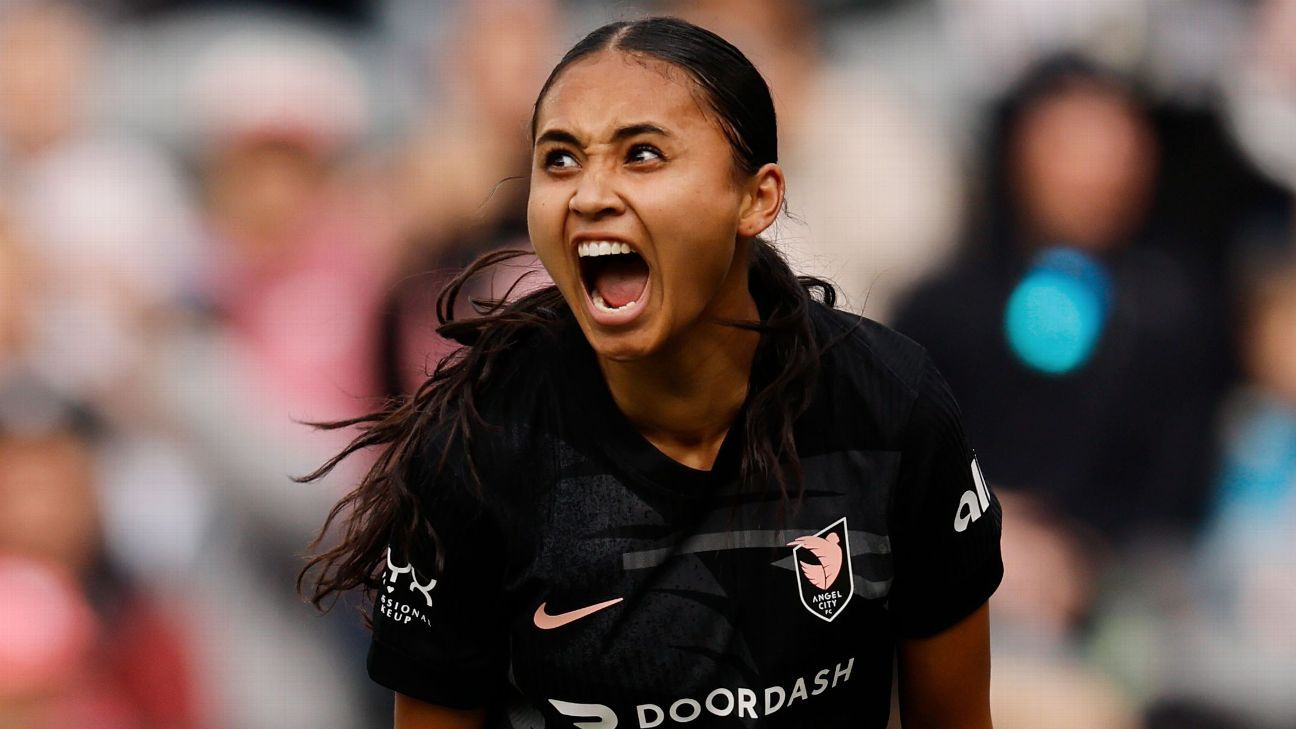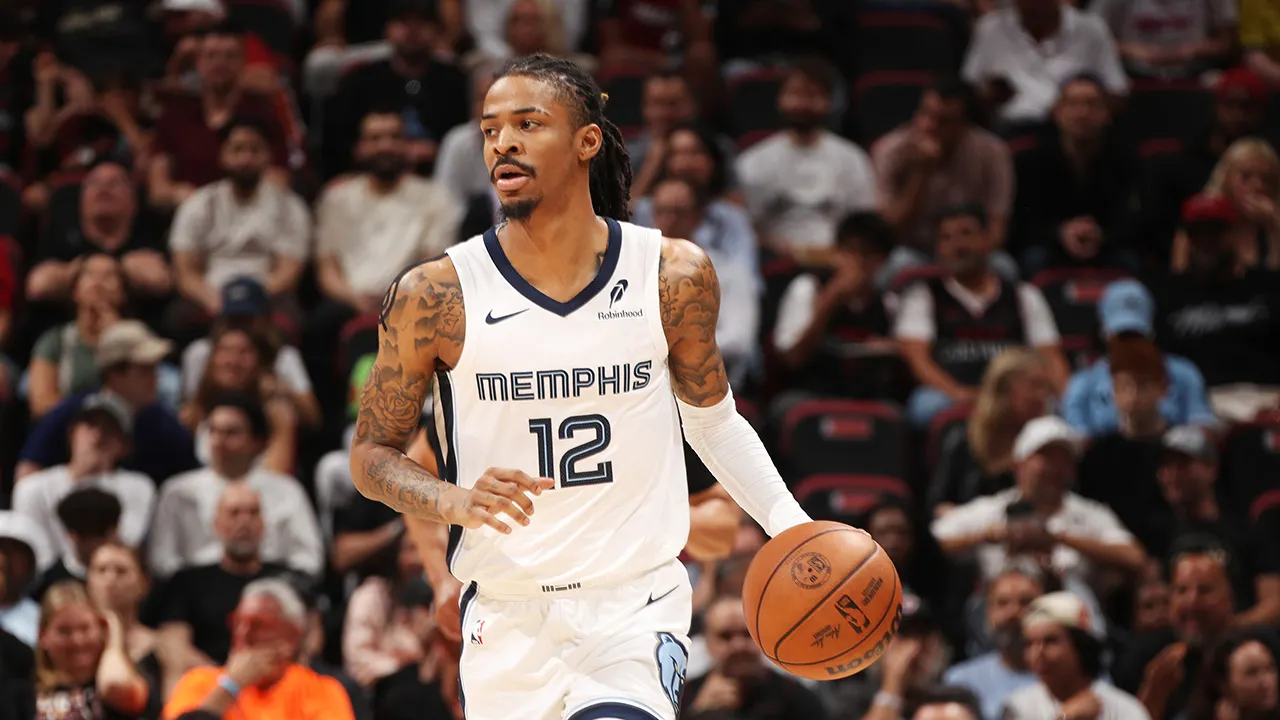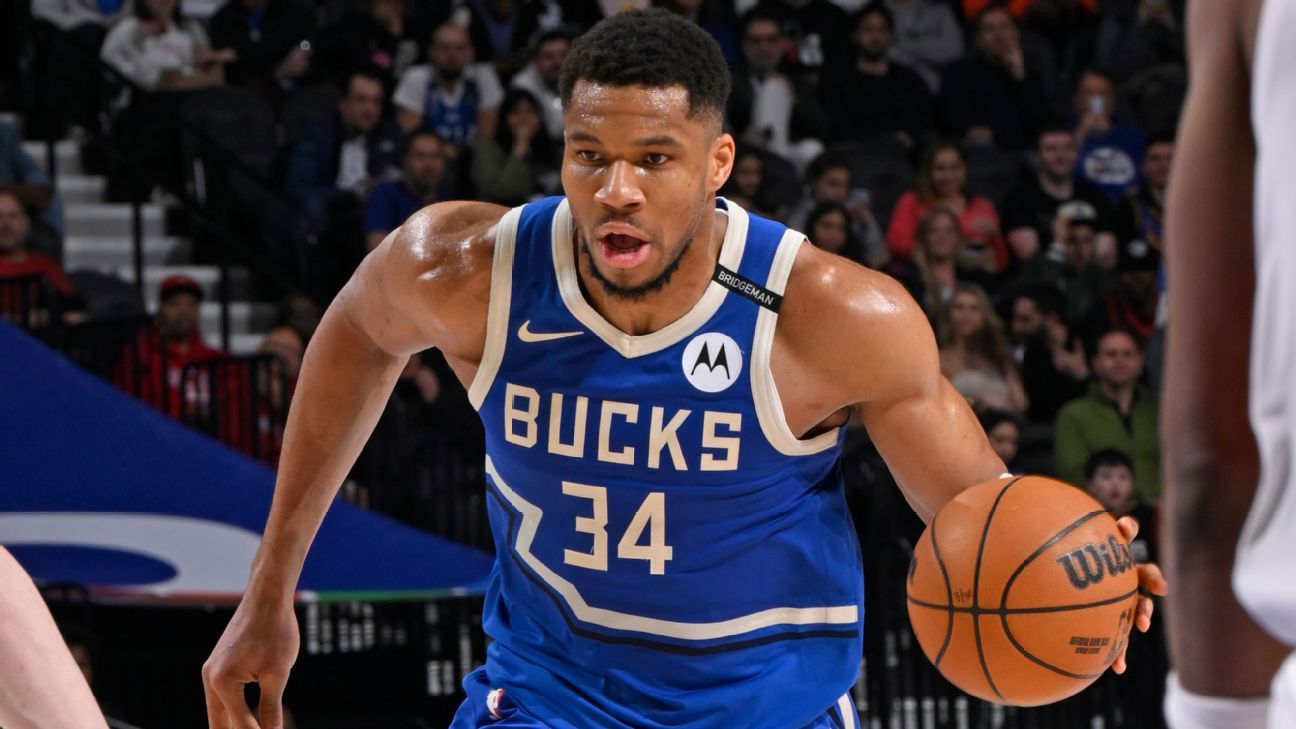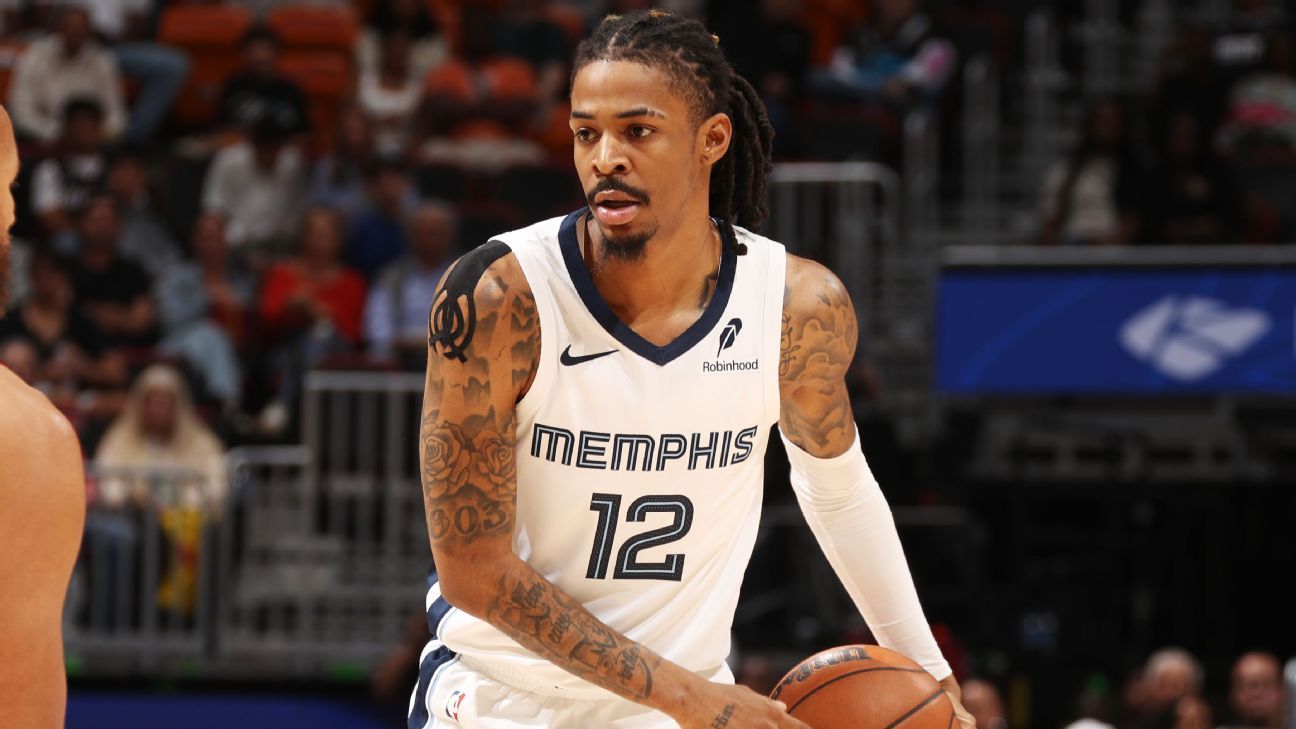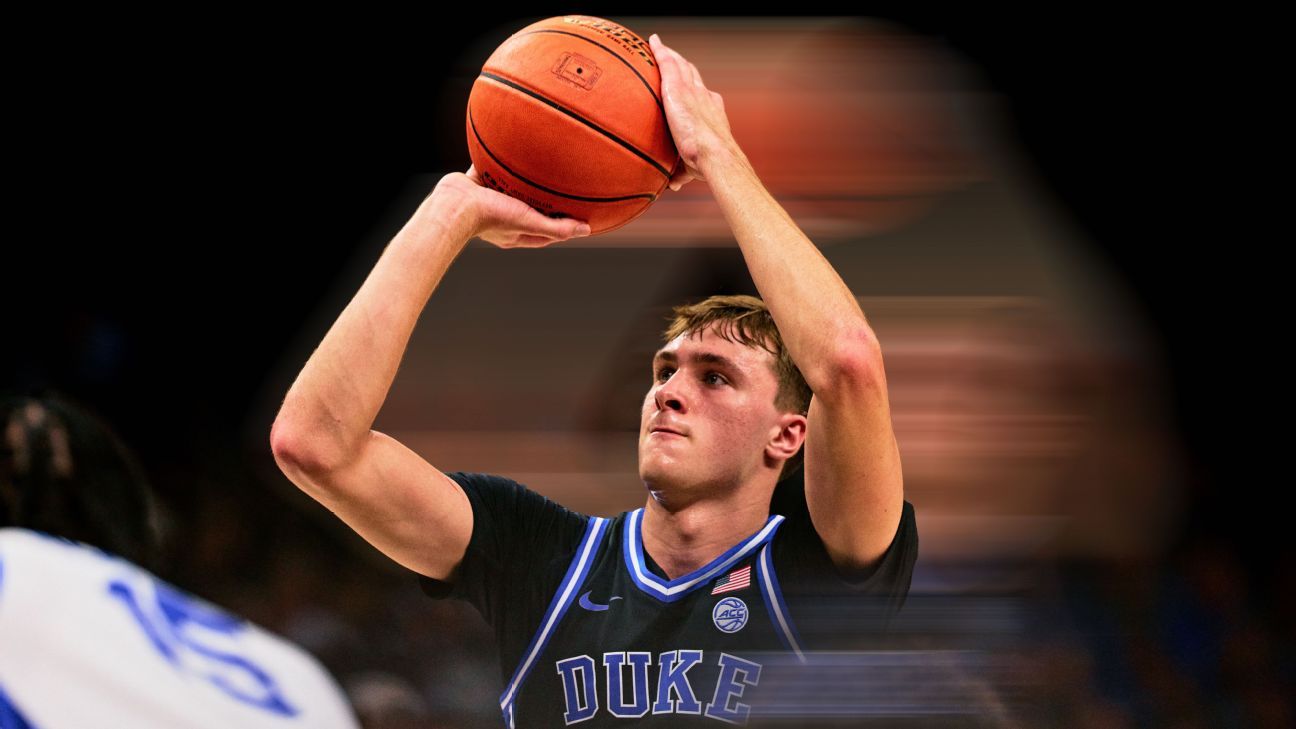
Tatum? Pippen? NBA execs share best comps for projected No. 1 pick Cooper Flagg
Cooper Flagg, the projected No. 1 pick in the 2025 NBA draft, leads Duke into the Final Four against Houston on Saturday (8:49 p.m. ET, CBS), and his exceptional play begs the question: To which NBA players — both past and present — does he best compare?
ESPN talked to NBA executives and scouts, who came up with five comparisons based on Flagg’s developing offensive skills, versatility and defensive prowess.
Player comps, though often divisive, are inextricable from how prospects are discussed among scouts. While imperfect, they can be useful in setting expectations and envisioning roles a player might grow into.
“I want to know, worst-case scenario, if we’re using a pick on this guy, give me someone who made the league who he reminds you of,” one Western Conference executive told ESPN.
“It builds the case to say why he’s an NBA player. You can give me two guys, this player with a side of that player, even a guy from an older era. It’s an easier sell when you can say this guy reminds me of that guy.”
Flagg’s first-team All-American season makes him a challenging case study because elite prospects have special qualities that set them apart. The diversity of their skill sets often call to mind several different players at once.
Here are five players whom NBA scouts tell us they’re leaning into as they go through their own evaluations for Flagg. These comps are designed to illustrate his range of outcomes and highlight his strengths on both sides of the ball.
Jump to a Flagg comp:
Jayson Tatum | Kawhi Leonard
Lamar Odom | Scottie Pippen | Andrei Kirilenko

Bio: Small forward; 6-foot-7; 227 pounds
Drafted: No. 15 overall in 2011 by the Indiana Pacers (traded to the San Antonio Spurs on draft night)
NBA front office take: “[Flagg]’s really good defensively and can be a game changer on that end pretty much immediately with his size, effort and IQ. He’s always been a very good defender and the offense is coming along. It’s a very similar path to the one Kawhi was on early in his NBA career, as a guy who had all these really useful qualities, and then entered as a real two-way force as he rounded out his game.” — a Western Conference scout
Where the similarities start: What Leonard became in the NBA — an effective perimeter scorer who could take on any matchup defensively at his peak — would be a fantastic outcome for Flagg.
There are stylistic similarities between them: On the offensive end, neither plays the prettiest style with the ball in his hands, but they each rely on balance and footwork in the midrange, make plays for teammates and would rather attack the basket and go downhill than settle for 3-point shots. Leonard evolved into a No. 1 option in the NBA; the big question hanging over Flagg is whether he’ll become that level of scorer.
Defensively, both players use their size and instincts to disrupt opponents and the flow of opposing offenses. Flagg, at 6-foot-9, is more of a shot blocker — he has been deployed by Duke as a roving forward away from the ball. Leonard’s physical strength and huge hands made him one of the league’s most devastating wing stoppers at his peak. This comp points to the fact that Flagg’s impact on winning games, coupled with further offensive development, could elevate him into franchise-player territory in the same way.
Where the similarities end: Leonard had a once-in-a-generation type of developmental arc. Unpolished as a power forward at San Diego State, he evolved into a two-way wing dynamo and Finals MVP with the San Antonio Spurs, then shifted into more of an offensive-minded force midway through his career. His accomplishments and outlier growth trajectory make Leonard a tricky comp.
To Flagg’s credit, he’s well ahead of where Leonard was entering the NBA in terms of offensive comfort level and on-court success — and at a younger age. While player development is nonlinear and unpredictable, that bodes well for Flagg’s future as a scorer: His freshman numbers show he’s on a faster track than Leonard, who entered the draft as a 20-year-old sophomore.
Leonard has a more developed upper body with a 7-3 wingspan. Flagg is taller and more lithe. He doesn’t have Leonard’s extreme length, measuring with a 6-11 wingspan at the 2024 Nike Hoop Summit. Flagg may offer more scheme versatility, with the size to guard bigger forwards, but might not evolve into the true wing stopper Leonard was in San Antonio — few players could lock up one-on-one matchups on the wing the way Leonard did in his Spurs years.
What the numbers say: Leonard and Flagg were very different college players, as evidenced by their stats, which underscore Flagg’s advancement compared to Leonard’s sophomore season at San Diego State in 2011.
Flagg’s efficiency (60% TS), playmaking (5.6 assists per-40 pace adjusted) and comfort from the 3-point line (37% to Leonard’s 27%) are well ahead, pointing to his level of polish. Leonard’s rebounding outpaces Flagg’s, and his steals are about on par, but he wasn’t near the level of scorer or initiator, developing those skills over time in the pros. While nothing is a given, there’s reason for optimism that Flagg will further blossom as an offensive option as he matures.

Bio: Power forward; 6-10; 220 pounds
Drafted: No. 4 overall in 1999 by the LA Clippers
NBA front office take: “Just the ease and comfort level handling the ball on the perimeter — we talk about [whether] guys are inside players who develop outside or perimeter players who take their game down low. Flagg has had such comfort on the perimeter. Odom filled out and was a late growth spurt guy with ball skills. You love a guy who at 6-10 can play with the facility of being a 6-3 guard.” — Western Conference executive No. 1
Where the similarities start: Using Odom, a two-time NBA champion and NBA Sixth Man of the Year winner, as a low-end comparison captures the intrinsic value of Flagg’s versatility. If Flagg plateaued as a scorer, his ability to function as a point forward, make plays for teammates and engender flexibility in the lineups played around him would still be additive.
Odom often functioned as an oversized ball handler in the NBA and effectively played point guard at Rhode Island in 1998-99. His career took off after leaving the Clippers for the Heat, then being traded to the Lakers as part of the 2004 Shaquille O’Neal deal. With the Lakers, Odom’s ability to play all over the floor on offense and cover multiple positions defensively made him an essential part of the 2009 and 2010 title teams.
While expectations for Flagg are higher than they were for Odom, the thought of him as a point forward who also changes the game defensively points to his exceptional ceiling.
Where the similarities end: Flagg’s developmental trajectory is on track to surpass Odom’s production in the NBA. Odom was a standout performer who led Rhode Island to the Atlantic 10 championship in his lone college season, but Flagg’s impact on a title contender sets him apart. Odom’s off-court struggles contributed to him not reaching his ceiling in his NBA career. Execs I’ve spoken to don’t have any concerns about Flagg off the court.
What the numbers say: Odom averaged 17.6 points, 9.4 rebounds, 3.8 assists, 1.0 steals and 1.8 blocks per-40 in his lone season at Rhode Island, shooting 53% on 2s, 33% on 3-pointers and 68.7% from the line. (Pace-adjusted stats from that era were unavailable).
Flagg’s season has put him ahead of Odom in every category, underscoring that this comparison is perhaps overly conservative, but Odom’s all-around production helps frame where the comp comes from.

Bio: Small forward; 6-8; 210 pounds
Drafted: No. 3 overall in 2017 by the Boston Celtics
NBA front office take: “Both of them at Duke presented really positively as guys that were going to have a couple of off-ramps to be super successful. We’re seeing that with Flagg recently, he’s had poor shooting nights like against [Alabama in the Elite Eight], and still was super impactful [toward] winning. … People questioned both of their shots, which turned out to be a silly concern, probably. They both have really good feel offensively in a way that’s just uncommon for their size and usage. — a second Western Conference executive
Where the similarities start: A one-and-done out of Duke, Tatum has developed into one of the NBA’s best players in his mid-20s, becoming the anchor of a championship team in 2024. A gifted scorer in high school, Tatum developed from a midrange player into a more well-rounded offensive option over time.
Flagg and Tatum are similar, with the former listed an inch taller and both measuring with 6-11 wingspans. They were both rigid and mechanical jump shooters in high school, particularly from 3-point range.
Tatum’s balanced, high-volume offensive profile with the Celtics shows how Flagg could grow into a similar role — particularly if his future team guides him toward high usage. Tatum has had success without being a top-flight 3-point shooter, with his percentages settling in the mid-to-high 30s on high volume, but not placing him among the league’s elite. He has expanded his passing ability over time, topping out this season with a career-high 5.9 assists per game.
Where the similarities end: Stylistically, Flagg and Tatum were much different as college freshmen. One of Tatum’s weaknesses as a prospect was his shot selection and limited passing acumen — and it took time for him to change his style. Flagg is a more accomplished playmaker for others, more than doubling Tatum’s assists per game at Duke, and the passing figures to be more central to his offensive value in the NBA. Flagg’s shot selection is a bit more team-friendly, but while he has made strides creating his own shot in the half court, Tatum was more polished.
Flagg will enter the NBA as a more impactful and focused defender than Tatum, who has improved with the Celtics but was never known for his defense as a prospect. Tatum has learned to use his size and versatility to his advantage and rebounds his position at a high level. Expect Flagg to be more impactful defensively as a rookie and potentially in the long run.
What the numbers say: The stats again show the prodigious nature of what Flagg is doing at his age: His college numbers stack up well with Tatum’s.
His superior passing is on display (5.6 assists per 40 adjusted to Tatum’s 2.6), and the advanced stats (+37.3 net rating, +14.5 BPM) capture some of his broader defensive impact on a more successful Duke team. Tatum wasn’t far behind in terms of efficiency (57.3% true shooting to Flagg’s 60%).

Bio: Small forward; 6-8; 228 pounds
Drafted: No. 5 overall in 1987 by the Seattle SuperSonics (traded to the Chicago Bulls on draft night)
NBA front office take: “I say Scottie because he could have been a No. 1 guy, and was after MJ left [Chicago], but he became by far the best No. 2. I think Cooper will be a hell of a No. 2, but he might need a top 10 [player] running mate with him. He can obviously prove me wrong, but I don’t see him as a No. 1 guy on a championship team in his career.” — a Eastern Conference general manager
Where the similarities start: This comp is a lofty way to illustrate Flagg might be best used alongside another elite player who can shoulder a heavy scoring load. Pippen is regarded as the best “second star” ever, pairing with Michael Jordan to win six championships with the Bulls in the 1990s. This comparison underscores Flagg’s impact in every other area, but there’s still immense upside if he doesn’t develop into an No. 1 caliber scorer.
Pippen was never a top-flight scorer and thrived in a do-it-all role alongside Jordan that enabled him to exert more of his energy on defense. Flagg’s offensive gifts might be best suited in that fashion, with his excellent passing and ballhandling allowing him to thrive as a hybrid point forward.
Where the similarities end: Pippen was more of a dynamic athlete who bullied defenders with physicality and in transition, using his strength and length to create advantages. It’s too early to know how Flagg’s frame will change, but he doesn’t play with the same degree of force.
Flagg’s feel and perimeter skills are well ahead of Pippen, who began as a walk-on at Central Arkansas and didn’t become an NBA prospect until a late growth spurt changed his trajectory. The fact Flagg is a much better shooter already suggests he might surpass Pippen’s offensive impact, although that doesn’t guarantee Flagg will turn into a true No. 1 scorer.
What the numbers say: While the difference in eras and level of competition doesn’t make this the most statistically significant comparison, the Pippen comp captures Flagg’s ability to fill up a box score and impact the game on both ends.
Pippen averaged 23.6 points, 10 rebounds, 4.3 assists and 3.1 steals as a 21-year-old senior at Central Arkansas in 1986-87 (blocks weren’t recorded at that time), pointing to an all-around impact, albeit at a lower level. He was a late bloomer who became one of the most versatile players of the 1990s but took a couple NBA seasons to break out.

Bio: Small forward; 6-9; 220 pounds
Drafted: No. 24 overall in 1999 by the Utah Jazz
NBA front office take: “Kirilenko led the NBA in blocks! I don’t see Flagg doing that. [Kirilenko] had the energy to expend more on the defensive end because he was a role player offensively. Kirilenko doing three blocks a game [at his peak] as a non-center is incredible, in an era where there weren’t as many possessions. … But you project Flagg to be much more meaningful on the offensive end.” — Western Conference executive No. 1
Where the similarities start: This comp was thrown around frequently with Flagg prior to the season. Flagg’s mentality and impact on that end of the floor led many scouts to invoke the 2004 All-Star from Russia, who was one of the better defenders upon his arrival to the NBA. Kirilenko led the league in blocks (3.3 per game) at his peak in 2004-05.
Flagg’s ranginess and instincts as a defensive playmaker are the driving force behind this comp.
Where the similarities end: The more we’ve learned about Flagg, the less this comp makes sense. Kirilenko was far behind Flagg offensively at a similar stage. Kirilenko peaked at 16.5 points per game in the NBA, was never a prolific outside shooter or versatile scorer, nor someone capable of heavy offensive initiation. Flagg’s offensive aptitude clears the bar here — his passing ability and intuitive feel make him a very different player.
Also, Kirilenko had a 7-foot-4 wingspan, which contributed to his prolific shot blocking.
What the numbers say: Kirilenko’s rookie season line in Utah (2001-02) saw him finish third in NBA Rookie of the Year voting, with 10.7 points, 4.9 rebounds, 1.4 steals, 1.9 blocks and a 55.3% true shooting clip in 26 minutes per game. He hardly shot 3s and made 48% of 2-point attempts.
Assuming full health, expect Flagg to surpass those offensive totals, with more minutes and possessions headed his way in the NBA. It’s not likely Flagg’s block numbers will reach that extent, but the impact should be there nonetheless.





